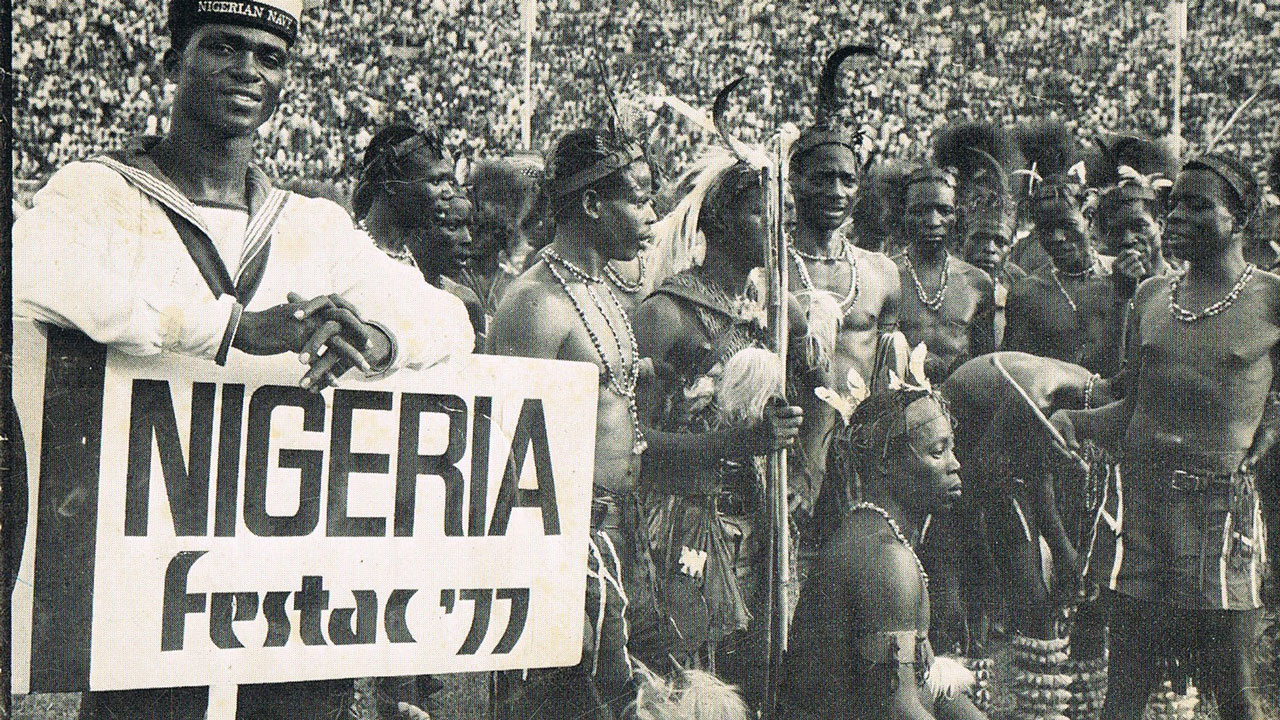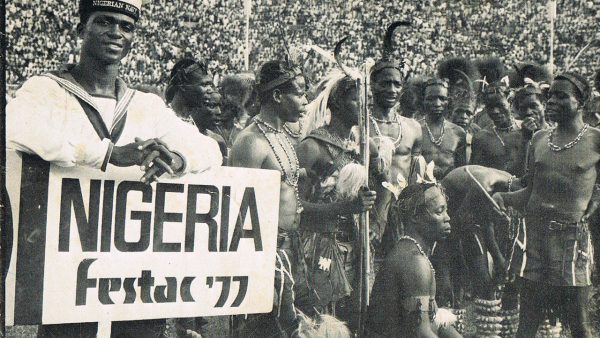The second African and Black Festival of Arts and Culture, otherwise known as Festac ’77. was held in Lagos from the 15th of January, 1977 to the 12th of February, 1977. The festival was intended to showcase to the world the richness of African culture and to expose African music, fine arts, drama, religion and literature to the wider world.
This was a follow up from the First World Festival of Black Arts or World Festival of Negro Arts, held in Dakar in 1966. Festac ’77 was a pan African festival that sought to bring Africa and Africans (at home and diaspora) closer to one another through arts and culture.

FESTAC ’77
The name FESTAC is an acronym that is gotten from these words, ‘Festival of Arts and Culture.‘ This pan-African festival brought to Nigeria, over 15,000 participants from about 70 countries. At the opening ceremony in the Lagos National Stadium, there was a parade from contingents of 47 countries in front of government officials, visiting heads of states and a capacity crowd of a hundred thousand.
The revitalization and promotion of black and African values and civilization, to reiterate the various contributions that blacks and Africans have made in sports and arts globally, to promote a better interracial understanding and interaction between Africans/blacks and the world were the core aims of the festival.

Importantly, the National Theatre hosted many events throughout the festival including an International colloquium on the theme ‘Black Civilization and Education’, organized by UNESCO.
In his speech on the ‘Problem of Black Civilization and African languages’, the then Nigerian head of state, General Segun Obasanjo said:
‘The standing tragedy of all blacks and Africans, wherever they may be is that their tongues have been pulled out and they must speak in strange tongues. To overcome this standing tragedy, we need to keep humility, patience and painstaking dedication.’
Also at the colloquium, the Director-General of UNESCO, Amadou-Mahtar M’Bow said:
‘I think it is an important theme for Africa and for those countries of the diaspora, our brothers and sisters from the west indies and the American continent, as well as all those other people in the Indian ocean and pacific who present the same human and cultural characteristics or who quite simply have the same aspiration as peoples of Africa. This festival is therefore of the greatest interest to UNESCO whose vocation it is to contribute to human progress and forge stronger links of cooperation between all peoples while respecting the cultural identity of each and every one of them.’
In addition, it was because of this festival that the popular Festac Town or “festival village” was built to house contingents of various countries. In the first phase, huge estates were developed to house the visitors which later became inhabited by Lagosians. At the festival village, it was a great spectacle; countries from all over the world had direct interaction with each other. Culture and tradition from all over the world were fused in joy and celebration.


Highlights of visual performances from Festac 77 included grand durbar in Kaduna and regatta in Lagos.
Highlights At TBS
Tafawa Balewa Square was the venue for different drama and musical shows. There were concerts featuring the likes of Boston’s Ronald Ingraham Concert Choir, Mayfield Small, Zairean rumba giants T.P. OK Jazz and Tabu Ley Rochereau, the formidable Golden Sounds band of Cameroon, the elegant and spiritual orchestrations of Guinea’s Bembeya Jazz National, the Invaders Steel band from Guyana and many others.
One of the musical highlights of the celebration was the performance of The National Black Theatre of Harlem led by Barbara Ann Teer. At the end of their rendition, the crowd ran up the stage to join them, singing and dancing.
An anthem, titled For My People, was also written for the festival by American Margaret Walker and produced by Akin Euba.
Lyrics
1] Let a new earth arise
Let another world be born
Let a bloody peace
Be written in the sky.
Refrain: Festac 77 is here
2] Let a second generation
Full of courage issue forth
Let a people loving freedom
Come to growth
Refrain: Festac 77 is here
3] Let a beauty full of healing
And strength of final clenching
be the pulsing in our spirits
And our blood
Refrain: Festac 77 is here
4] Let the martial songs be written
Let the dirges disappear
Let the race of men now rise
And take control
Refrain: Festac 77 is here
Apart from what the festival aimed for Africa, it was also important for Nigeria to justify the ‘Giant of Africa’ tag. As president Leopold Sedar Senghor said at the First World Festival of Black Arts in Dakar, ‘Nigeria is to Africa what Greece was and still is to the history of Europe.’ Leopold named Nigeria, ‘A Star Country.’
At the closing ceremony on February 12th, Nigerians were thrilled to performances by Stevie Wonder and Miriam Makeba. The atmosphere was still festive at the end of the festival. While most people departed for their various countries, many stuck around for weeks. Stevie Wonder was not left out. According to Uchenna Ikonne in his article, Festac 77:
‘A week after the end of FESTAC, [Stevie Wonder] appeared at the 19th Annual Grammy Awards live via satellite link from the National Theatre in Lagos.’
Source:
All Africa
Wikipedia
Daily Redbull Music Academy
Pulse NG
Old Naija
Tapatalk
Featured Image Source: Guardian NG


